Last Updated on April 30, 2024 by Nikole
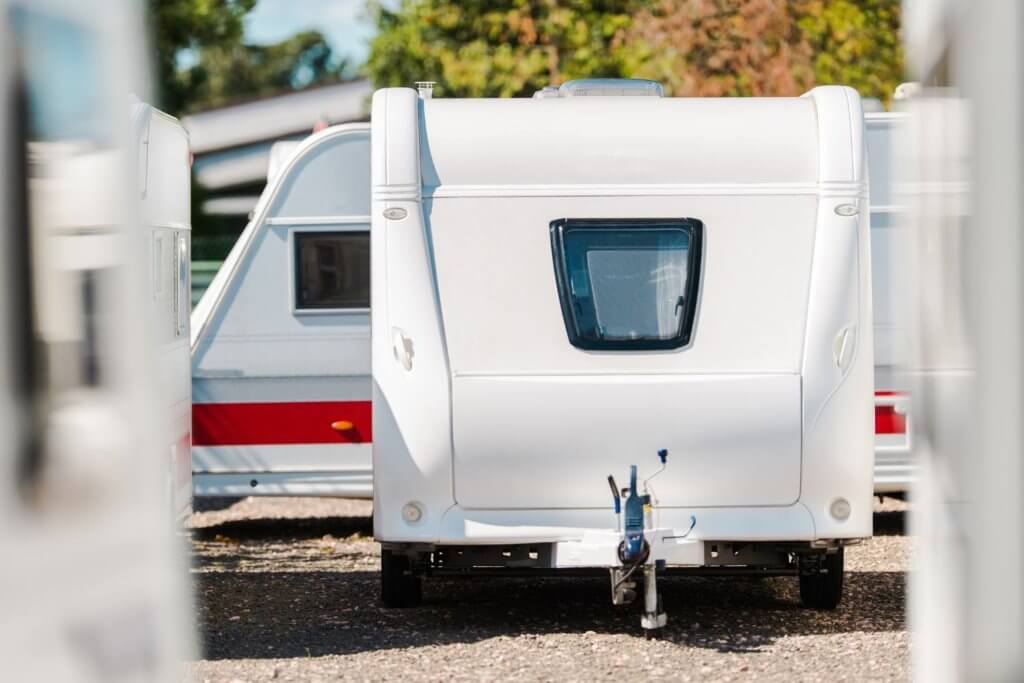
All of this terminology around camper vans, motorhomes, and living on the go can be a bit confusing, and most people do not use the terms correctly.
In this post, I will go over all the different ways you can travel in a tiny home on wheels, along with their different class names. Don’t worry about using incorrect words when talking to your new campground friends; I got you covered!
Here is a simple chart I put together so you can easily compare different RVs side-by-side.
| Size | Weight | Distinguished features | Price | |
|---|---|---|---|---|
| Motorhome | Depends on the class | Depends on the class | Motor is built in | $10,000-$300,000 |
| Class A | L25-45ft x W8ft x H11-13 ft | 13,000-30,000 pounds | Largest motorhome | $50,000-$150,000 |
| Class B | L18ft X W7.5ft X H8ft | 6,000-11,000 pounds | It is a camper van | $10,000- $100,000 |
| Class C | L25ft-35ft x W8ft x H10ft | 10,000-12,000 pounds | Cab has a bed over it | $50,000-$150,000 |
| Travel Trailers | Depends on the type | Depends on the type | Does not have built in motor | $5,000-$150,000 |
| 5th-Wheel | 20-40ft long | 2,000-9000 pounds | Needs Hitch in truck bed | $40,000-$150,000 |
| Truck Bed | 7-8 ft. tall | 1,500-3,000 pounds | Living quarters fit In truck bed | $5,000-$10,000 |
| Pop-up | 7 ft. wide 7 ft.tall | 600-4,000 pounds | Made of tent-like material | $10,000-$15,000 |
This post may contain affiliate links, which means I’ll receive a commission if you purchase through my links, at no extra cost to you. Please read full disclosure for more information.
What is an RV?

First of all, let’s talk about RVs because this is the first and most common misconception. RV is more of a blanket term for motorhomes, camper vans, campers, and other Recreational Vehicles. RVs include a drivable living space which means campers and camper vans are included under this blanket term.
All RVs have at least a sleeping area with a bed. Some RVs include luxuries such as a kitchen, bathroom, lounge area, and laundry room.
Motorhomes

Motorhomes are RVs that are commonly known for having a driveable cab attached to the “home” part of the RV. In other words, you don’t need to attach a trailer to a truck to tow it.
Motorhomes include classes A, B, and C. Each class comes in different shapes and sizes.
What are Class A Motorhomes

Class A motorhomes are the largest RVs measuring 25-45 feet in length. The length doesn’t always define a class A motorhome; instead, the 22.5-inch wheels, the commercial bus or truck chassis, and two or three axles.
The most extravagant RVs at a dealership are considered class A. You will most likely find slide-outs to extend the living space, along with a large kitchen, several bedrooms, and several bathrooms.
The class A motorhome typically sleeps 4 to 8 people and usually carries bunks, the main bedroom with a king or queen bed, and a slide-out couch or two.
How big is a class A RV?
The average size of a class A RV is L25-45ft xW8ft(with slide outs pulled in) x H11-13 ft.
How much do Class A RVs cost?
$50,000-$150,000 are typical prices for a class-A motorhome. At $50,000, you may find the most basic packaging with the least amount of storage.
At the higher end, you will find larger holding tanks, more beds, better countertops, and luxurious bathrooms. Some of the higher-end motorhomes will also include dishwashers, washers, and dryers.
Is a class A RV right for you?
As long as your class-A motorhome is less than 26,000 pounds and less than 40 feet long, you should be fine driving with a regular license. For anything larger than that, you may need to get your CDLs or take an RV safety course.
These weights and dimensions could also differ between states.
As long as you don’t mind driving a large commercial-like vehicle, class-A will provide you with the most amount of space and luxury.
What is a Class-C Motorhome
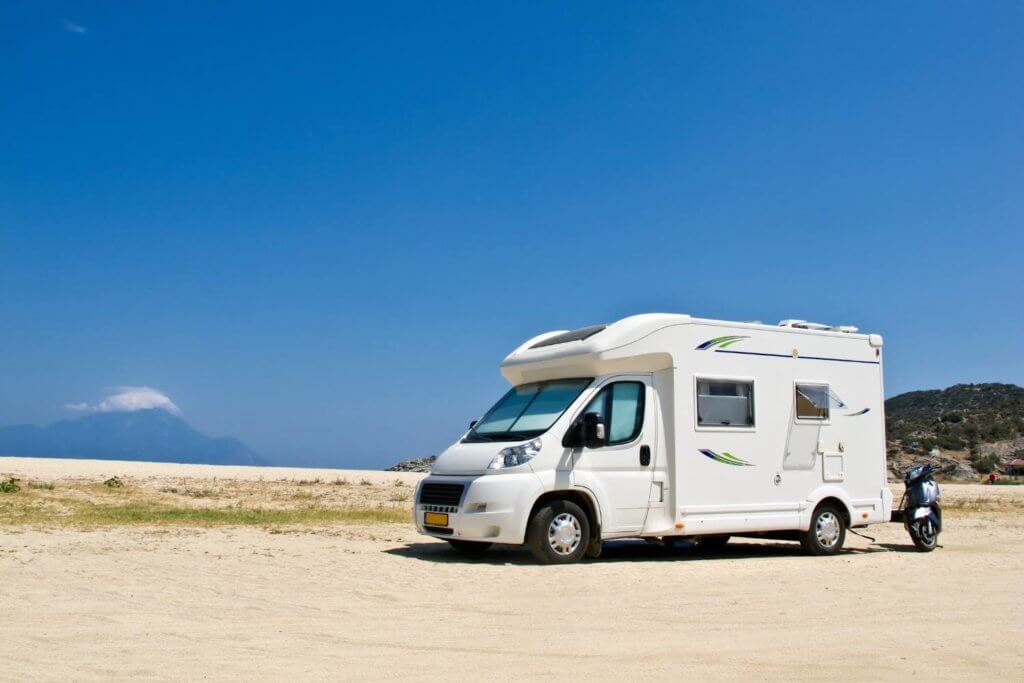
Class-C is the most popular type of RV because they are the easiest to drive, can still fit up to 8 people, and are about 25ft- 35ft long.
Most class-C motorhomes are built with a truck or box truck chassis attached to the living quarters. However, the cab can look separate from the living quarters.
You will typically find an extra bed or storage above the front cab (this feature defines class C motorhomes), along with a curtain or closing doors to separate the driving quarters from the living quarters.
How big is a class C RV?
These are the average dimensions of class C motorhomes
L25ft-35ft x W8ft x H10ft
How much do Class C RVs cost?
$35,000- $150,000+
Is a class C RV right for you?
Class C is perfect for those who want something bigger than a camper van and something smaller than class A. Most class Cs can carry just as many passengers as class-A; they just aren’t quite as spacious.
If you have a large family but don’t want a bulky RV, then Class-C is the perfect option for your traveling needs.
What is a Super Class C Motorhome?
A super class C RV is similar to a regular class C with one major difference- the engine is the same as that of an 18-wheeler. With this type of engine, you can now tow a vehicle as big as a truck behind your motorhome, and you can easily drive across rough roads.
These motorhomes are perfect for those wanting to park their RV at a campsite and travel around with a vehicle that doesn’t guzzle gas.
Super Class-Cs come with a heavy price tag of around $200,000, so it may not be worth the money.
What is a Class B Motorhome
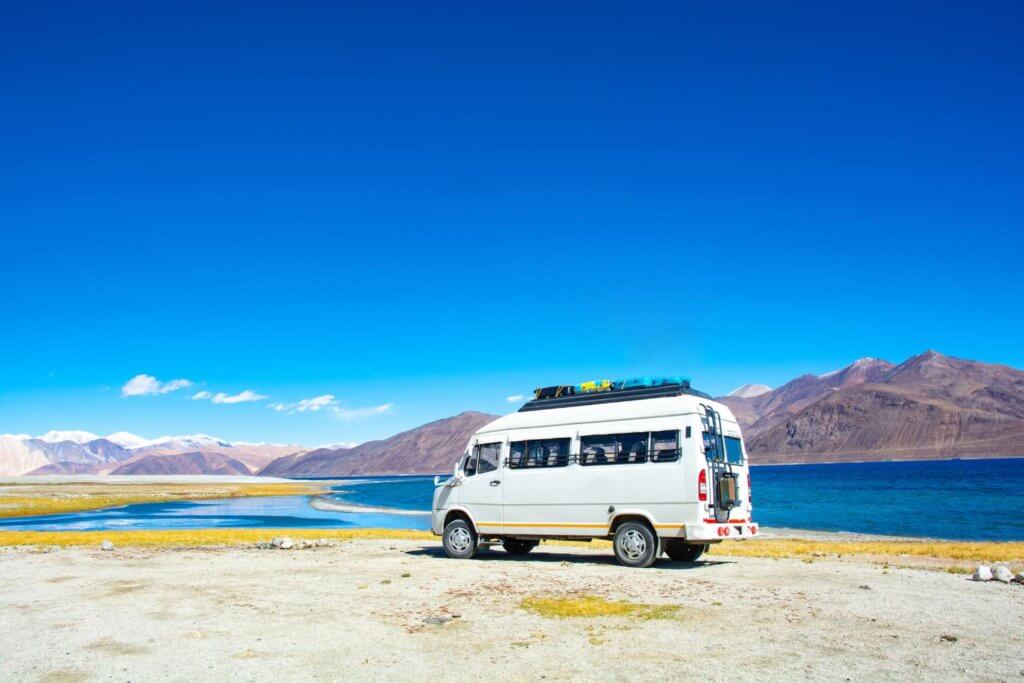
Class B motorhomes are also known as camper vans. As you can see, there are many terms you can use for each type of RV. In this case, we will refer to class Bs as camper vans.
What is a Camper Van?
A camper van is a van, typically a sprinter, that has been converted into a living space.
Any van can be converted into a mobile home, as long as you can fit a bed in the back; in other words, you don’t need to spend a ton of money purchasing one and converting one- we spent less than $500 converting our Ford Transit Connect.
Sometimes larger vans have a back seat that doubles as a riding seat or rolls out into a bed. Camper vans can also have a kitchen, different bed layouts, and bathrooms.
How big is a camper van?
Camper vans come in all shapes and sizes, and you can convert just about any van into a camper van.
Here are some of the typical measurements you will find with camper vans.
Small: L15ft X W7ft X H7ft
Medium: L18ft X W7.5ft X H8ft
Large: L21ft X W7.5ft X H9ft
If you would like more specs and details about specific camper vans, check out our post, where we compare six different camper vans.
Camper vans are perfect for those wanting to travel or live on the road. These motorhomes make it easy to free camp and still live comfortably.
How much does a camper van cost?
Used camper vans are the cheapest way to go- you can find these anywhere from $10,000- $100,000. If you would like a prebuilt high-end camper van (like from Mercedes), you are looking at paying between $200,000-$300,000
Is a Camper Van Right for You?
There are many things you should ask yourself before you decide to purchase a camper van, such as:
- How much space do I need?
- How much money do I want to spend on one?
- Is the limited space enough for what I am taking on my trips?
- Do I want to do more free camping or campground camping?
If you aren’t sure what you want, try renting a camper van from a van rental company or going camping with a friend who already has one. You can also check out our pros and cons list for owning a camper van.
What are Travel Trailers
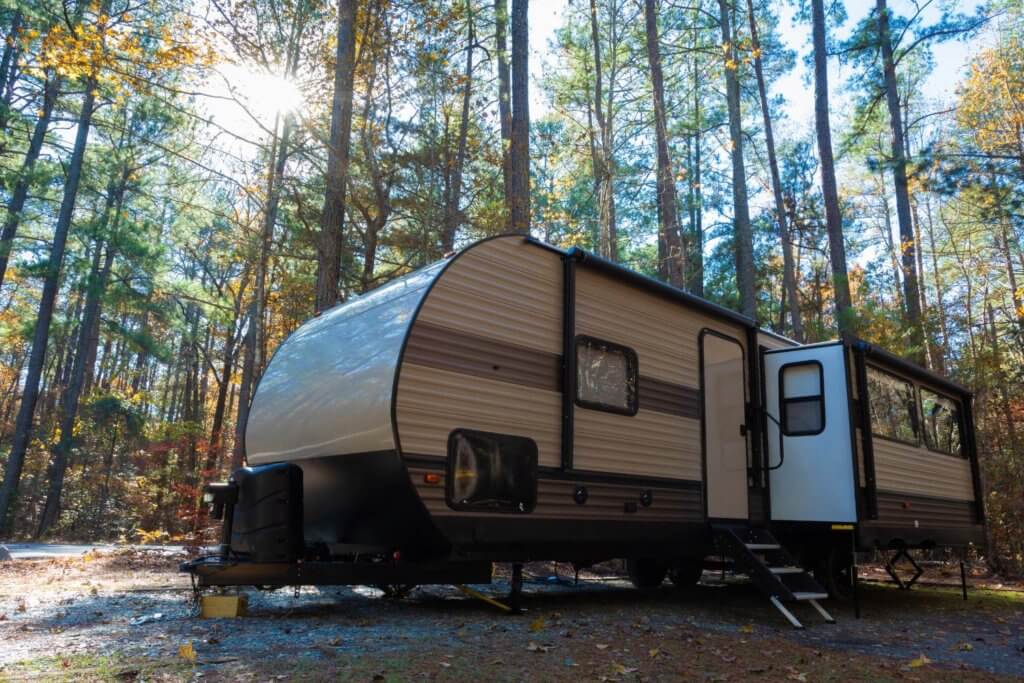
A travel trailer is an RV without a motor; in other words, you must have a separate vehicle to tow your living quarters. You will find many terms that are used instead of a travel trailer, and that includes:
- Teardrop
- Camper
- Pop-up campers
- Conventional trailer
- 5th wheeler
Many travel trailers come with one or more bedrooms, bathrooms, and a kitchen. There are many floor plans to choose from.
When compared to a motorhome, travel trailers are less luxurious. You are looking at prices between $10,000- $200,000 for a travel trailer- depending on size and floor plan.
How big is a travel trailer?
Like motor homes, travel trailers come in all shapes and sizes, with a Mypod being the smallest and a 5th wheel or toy hauler being the largest.
How much does a travel trailer cost?
$10,000- $200,000
Is a travel trailer right for you?
If you don’t mind backing a truck up to a hitch and hauling separate living quarters to a campsite, travel trailers are a more affordable option when comparing campers to motorhomes.
You are still able to accommodate the same amount of people within a travel trailer as you would a motorhome. However, most people believe these types of RVs to be more difficult to drive than a motorhome.
5th Wheel Travel Trailer

A 5th-wheel travel trailer is only for those who own a truck or plan to purchase a truck. These campers require an in-bed truck bed hitch. When the trailer is attached, the bedroom typically hangs over the hitch of the truck bed, allowing for more living space.
You may find it common that 5th wheelers have stairs leading up to the bedroom area. The rest of the floor plan is lower than the bedroom and truck bed.
How big is a 5th-wheel travel trailer?
A 5th wheel camper can be anywhere between 25ft- 45ft. You will find that the most popular sizes are around 35 feet in length.
How much does a 5th-wheel camper cost?
$40,000- $150,000
Is a 5th-wheel camper right for you?
5th wheel campers provide open spaces and more areas to fit more people. These campers may be great for large groups traveling together, as long as you don’t mind getting a truck bed hitch installed.
Truck Bed Camper
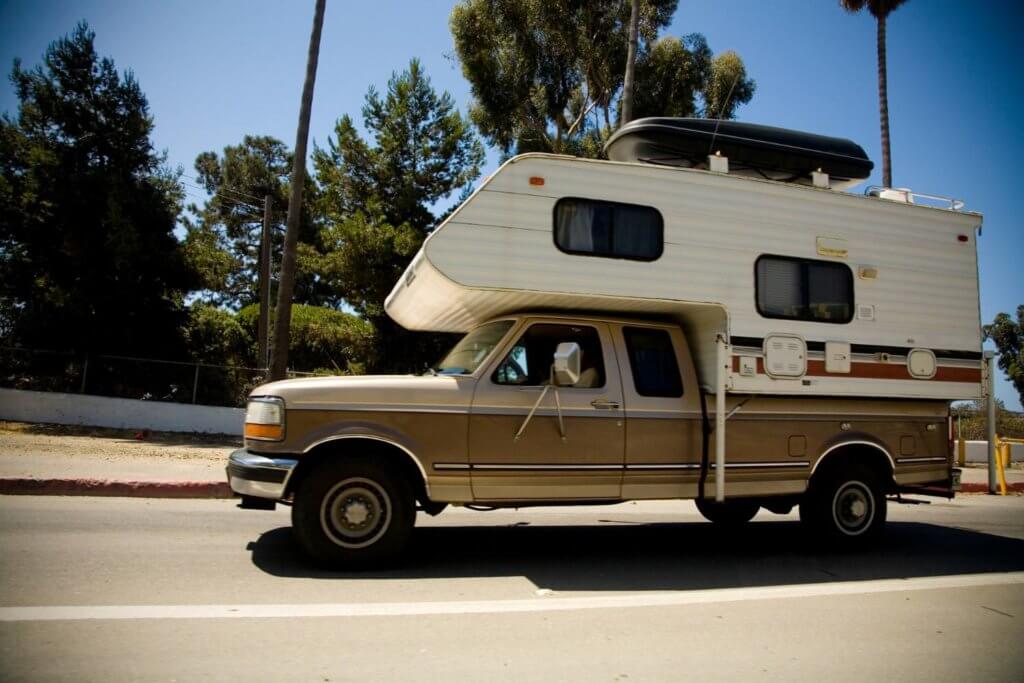
A Truck Bed camper is also considered a travel trailer; only there is no hitch involved. Instead, a shell that contains the living quarters sits inside a truck bed.
These unique travel trailers usually only consist of a bed. Sometimes the unit can include a small kitchen area with a mini fridge. A mini bathroom with a shower and toilet can also be included, depending on how large the truck bed is.
How big is a truck bed camper?
A truck bed camper shell should be about the same size as your truck bed and will be about 7 to 8 feet tall.
How much does a truck bed camper cost?
$5,000-$80,000
Is a truck bed camper right for you?
Truck bed campers are only great for those who already own a truck. You can only fit one or two people; therefore, this camper option is not great for families.
What are Pop-up Campers?
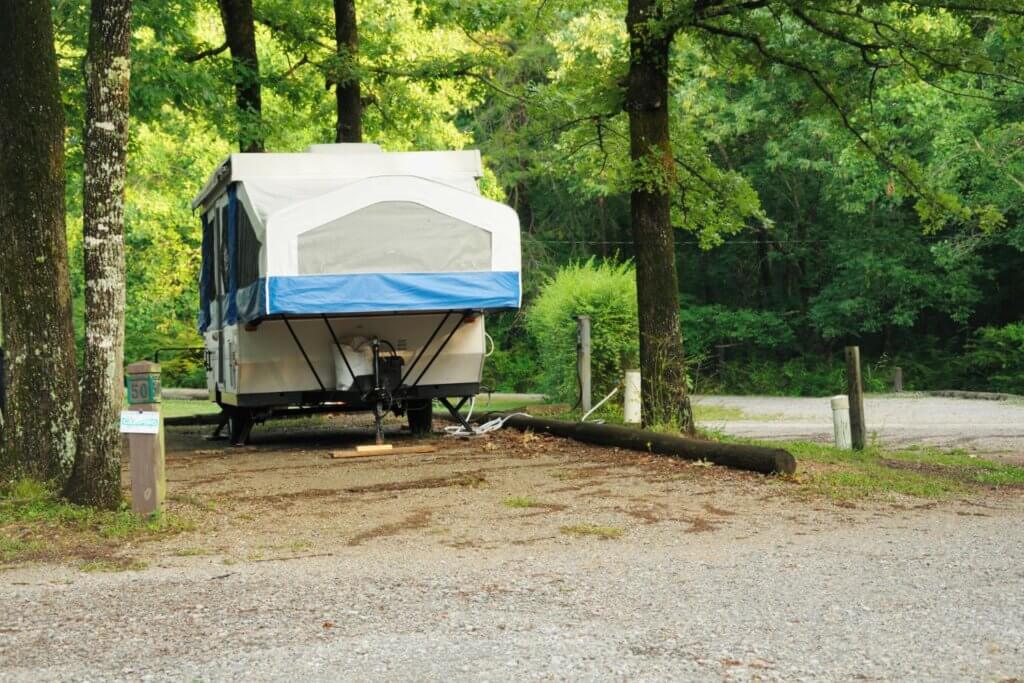
A pop-up camper is yet another form of a travel trailer. Think of a pop-up as a cross between a tent and a camper. You can haul it like a trailer when the “tent” part folds into the trailer. When it’s time to camp, fold the “tent” part out to access the living quarters.
Typically you will find one or two areas that fold out past the base of the camper that serves as the sleeping quarters. Sometimes you can create separate bedrooms by zipping a curtain.
How big is a pop-up?
Typical pop-up campers are 7 feet wide and 5 to 7 ft tall.
How much does a pop-up cost?
$10,000-$15,000
Is a pop-up right for you?
Pop-up campers are not ideal for those with larger families; however, some can hold up to eight people. Pop-ups are harder to keep cool or warm compared to other travel trailers because of the tent-like material it is made of.
Which is Better, a Camper or a Motorhome?

The hardest decision is choosing between a camper and a motorhome. Consider a few things when choosing between the two:
- How many people are vacationing with you
- What is your budget
- How much driving experience do you have
- How much space do you need
- Do you have a separate vehicle to tow a camper
Motorhomes are more expensive than campers because they have a motor and living quarters; however, the smaller class sizes are easier to drive than a camper because it’s all one unit.
Motorhomes and campers can both house the same amount of people, but motorhomes seem to have more open space, especially if you go up a few class sizes.
Choosing between a motorhome and a camper depends on what lifestyle suits you best. If you are looking to house a ton of people, have easy driving, and don’t mind the expenses, then a motorhome is perfect for you. If you don’t mind backing a stubborn trailer, a camper will fit your budget better and house just as many people as a motorhome.
In Conclusion
Now that you know some of the differences among RVs, you can start deciding which one would serve your purpose best and use proper terminology at campgrounds and so forth.
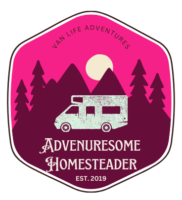



This is great information, I love how you have split it all up…I’d be a motorhome person over an travel trailer…thanks for the information
Thank you for reading!